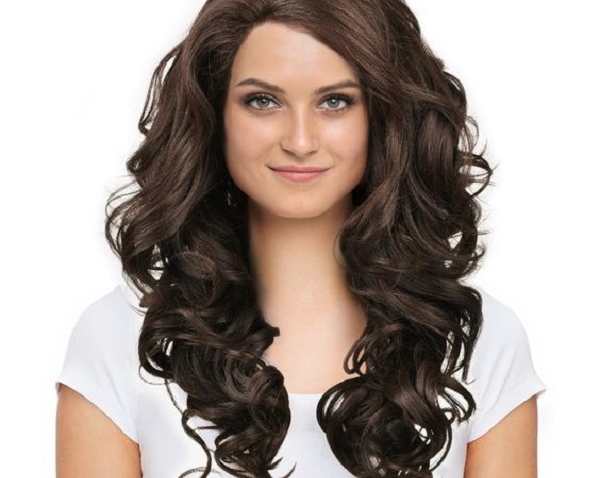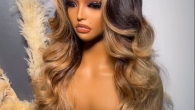
The Enduring Tradition of Wigs in UK Courtrooms
The Role of Wigs in UK Legal History
Origins of Wig-Wearing in Court
Why do barristers wear wigs? The practice of wig-wearing in UK courts started in the late 17th century. The syphilis epidemic led to widespread baldness, making wigs a fashionable solution. Louis XIV of France popularized this trend, and Charles II of England adopted it too. UK barristers began wearing wigs around 1685, signifying professional dress.
The Social Influence of the 17th Century on Legal Attire
The 17th century was a time of social and aesthetic change. Wearing wigs meant wealth and sophistication. The legal field, valuing tradition and decorum, embraced this fashion. Wigs thus became a symbol of legal professionalism and have been retained in the courtroom ever since.
Symbolism of Wigs in the Legal System
Why do barristers wear wigs? Wigs serve more than a historical purpose in the UK legal system – they represent a deep-rooted symbolism that is intertwined with the administration of justice. The wearing of wigs by barristers and judges is emblematic, standing for the virtues of anonymity and formality in legal proceedings. This long-standing tradition reinforces the idea that those who practice law are part of an age-old profession with well-established norms and values. Today, while eyebrows may be raised at the sight of these perukes, which can seem out of place in our modern era, they remain a steadfast symbol of the legal world in the United Kingdom.

Anonymity and Formality
Wearing wigs contributes to a sense of uniformity and removes personal identity from the equation, allowing barristers and judges to personify the law itself, rather than their individual selves. The horsehair wig masks personal features and helps maintain a barrier between personal biases and the case at hand. By donning this piece of attire, legal professionals symbolize their commitment to serving justice impartially and uphold the traditions which evoke the formality and seriousness of legal proceedings.
Conveying Authority and Respecting Legal Traditions
The appearance of authority is paramount in the law, and wigs contribute to this visual command. The practice is not only about upholding a symbol of historical continuity; it also involves showing respect to legal predecessors. Wearing a wig is a nod to the rich past of the legal profession, acting as a daily reminder to barristers and judges of the historical and cultural heritage they are entrusted to preserve and pass on. This not only conveys their authority but also pays homage to the centuries of legal traditions that the UK justice system is built upon.
Modern Views on Wig-Wearing in Court
With time, views on traditional practices often change, and wigs in UK courts are no exception. Some people argue that wigs are an outdated symbol with no place in a modern courtroom. Others feel they are key to preserving history and the gravity of legal procedures. This debate includes questions about the need for such traditions and whether they uphold or hamper contemporary values.
The Debate on Outdated Traditions vs Preservation
Discussions about tradition versus modernity in court attire are common. Critics say wigs belong to the past and make the legal system seem detached. They suggest we need to embrace current times. On the other side, supporters of wigs argue for their significance in legal heritage. They believe wigs maintain professionalism and continuity.
Impact on Racial, Gender, and Age Representation
The tradition of wig-wearing also faces scrutiny for how it affects diversity. Some claim wigs symbolize uniformity, overlooking individual identity. Others argue that wigs don’t suit everyone. They can hide racial features, like afro hairstyles, or look awkward on younger, less traditional-looking lawyers. So, the wig-wearing tradition’s impact on fair representation remains a pivotal concern in this ongoing conversation.
The Practical Considerations of Wig-Wearing
While the tradition of wearing wigs in UK courts is steep with history, practical factors also come into play.

Costs and Materials of Legal Wigs
Legal wigs, especially those made of authentic horsehair, are quite costly. Judges’ full-length wigs can surpass $3,000 in price, while barristers’ shorter wigs may cost over $600. Quality synthetic alternatives exist but are less traditional. Crafting these wigs involves intricate work, like styling, sewing, and gluing, adding to their expense. Despite the costs, the investment in a wig is often seen as a commitment to the profession.
Adapting Legal Attire to Modern Sensibilities
In recent years, the legal profession has started to ponder over the relevance of wigs. The need to adapt legal attire to contemporary standards without losing the essence of tradition is evident. For some, keeping wigs aligns with historical reverence, but for others, it presents a barrier to modernization. Discussions around inclusivity and practicality, alongside comfort, especially in high temperatures, are influencing change. Solicitors, who usually don’t wear wigs, illustrate that professionalism can be maintained without them.
The Future of Wig-Wearing in the Legal Profession
The future of wig-wearing in the UK legal profession is under scrutiny. Reforms in court attire reflect changing perspectives on this tradition. The question hanging in the air is whether wigs will remain a part of legal practice.
Reforms and Changing Practices in Court Attire
In 2007, UK courts relaxed the rules on wig-wearing. They allowed barristers to go without wigs in civil and family courts. Judges can decide if wigs must be worn, considering the case type and court. Some believe these changes make court less intimidating. Others think reforms dilute the gravitas of legal proceedings.
Speculations on the Discontinuation of Wigs
Speculation about ditching wigs grows. Many wonder if wigs will vanish from courtrooms within 50 years. Those for keeping wigs cite tradition and professional identity. But voices for change argue for inclusion and modern relevance. As debates continue, the legal profession inches closer to potentially ending a centuries-old custom.
Ceremonial and Day-to-Day Variations
The attire for UK legal professionals shows clear distinctions depending on the occasion.
Differences in Wigs for Judges and Barristers
Judges and barristers wear different types of wigs. Judges’ wigs are fuller and longer for ceremonies than the shorter, less ornate wigs barristers wear daily. These ceremonial wigs reflect status and tradition during formal events.
Court Dress Codes for Different Legal Roles
Legal roles dictate specific dress codes.
- Barristers must wear a black robe, wig, and white collar for criminal cases.
- Solicitors, typically not in wigs, handle non-courtroom legal work.
- Judges have special robes and may wear full-bottomed wigs for ceremonial occasions. Modern reforms see wigs less often, except in criminal courts and formal settings.
Overall, the dress codes aim to uphold formality and respect for the law’s legacy.
The Practical Side: Functionality of the Wig
A Wig’s Role Beyond Symbolism
Why do barristers wear wigs? Though wigs are primarily symbolic, they also serve a few practical purposes. For instance, in high-profile criminal cases, wigs provide barristers with a level of anonymity that may help protect them from public scrutiny or backlash. In sensitive cases, anonymity afforded by wigs can help safeguard the personal privacy of legal professionals.

Moreover, wearing wigs creates a unified courtroom appearance, which can help maintain focus on the legal issues rather than the individuals. The formal uniformity helps to manage expectations and reinforces the serious nature of legal proceedings, underscoring that the law applies equally to all participants.
Wigs in Modern-Day Courtrooms: Practical or Not?
While some might view wigs as inconvenient, others argue that the inconvenience of wearing a wig is a small price to pay for upholding a rich legal tradition. Supporters assert that barristers willingly accept the minor discomfort because they believe in the symbolic weight of their attire. In this sense, the wig is both a duty and a privilege, representing the wearer’s respect for legal institutions and their dedication to justice.
A Legacy of Dignity, Equality, and Tradition
The wig has been a hallmark of the legal profession for centuries, symbolizing more than just a mode of dress—it represents values like equality, respect, and continuity in the justice system. Despite debates over its relevance, the wig endures as a reminder of the legal profession’s history and a mark of authority and decorum in the courtroom. Whether it is celebrated for its tradition or questioned for its modern-day applicability, the barrister’s wig remains an indelible part of legal culture.












Leave a Reply